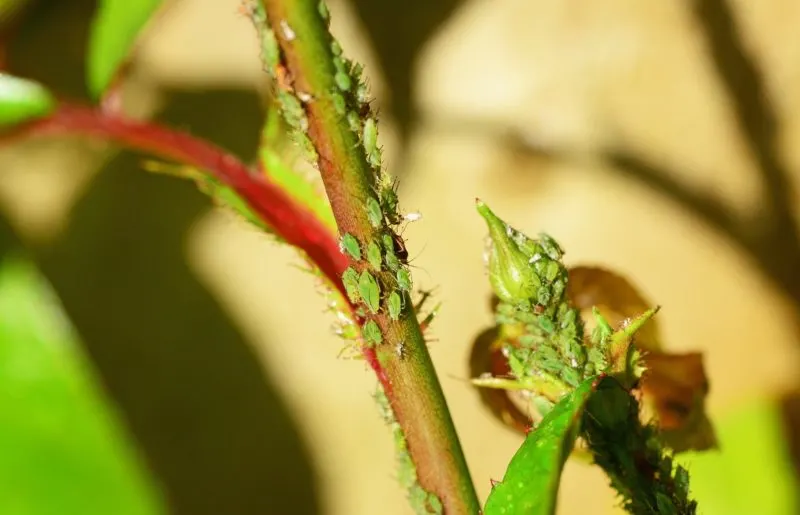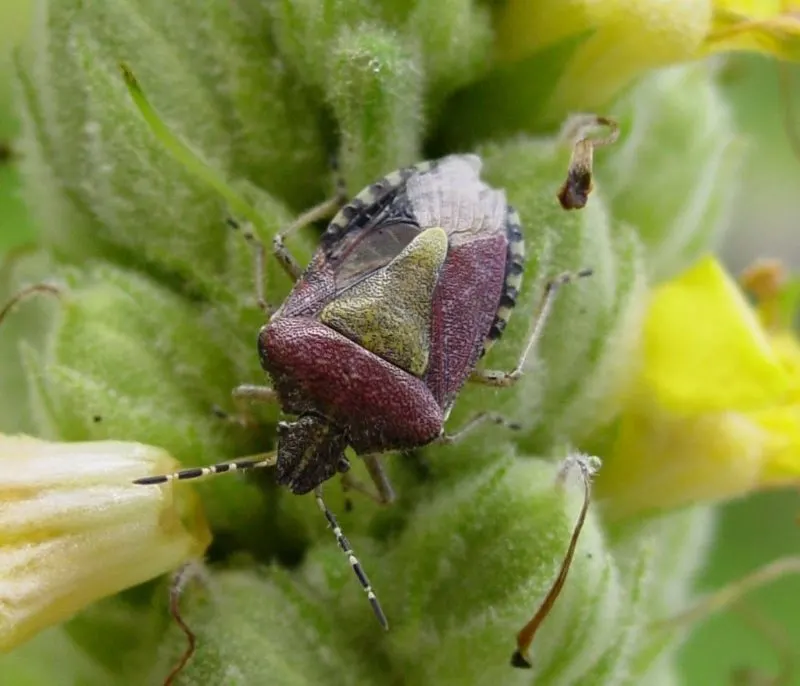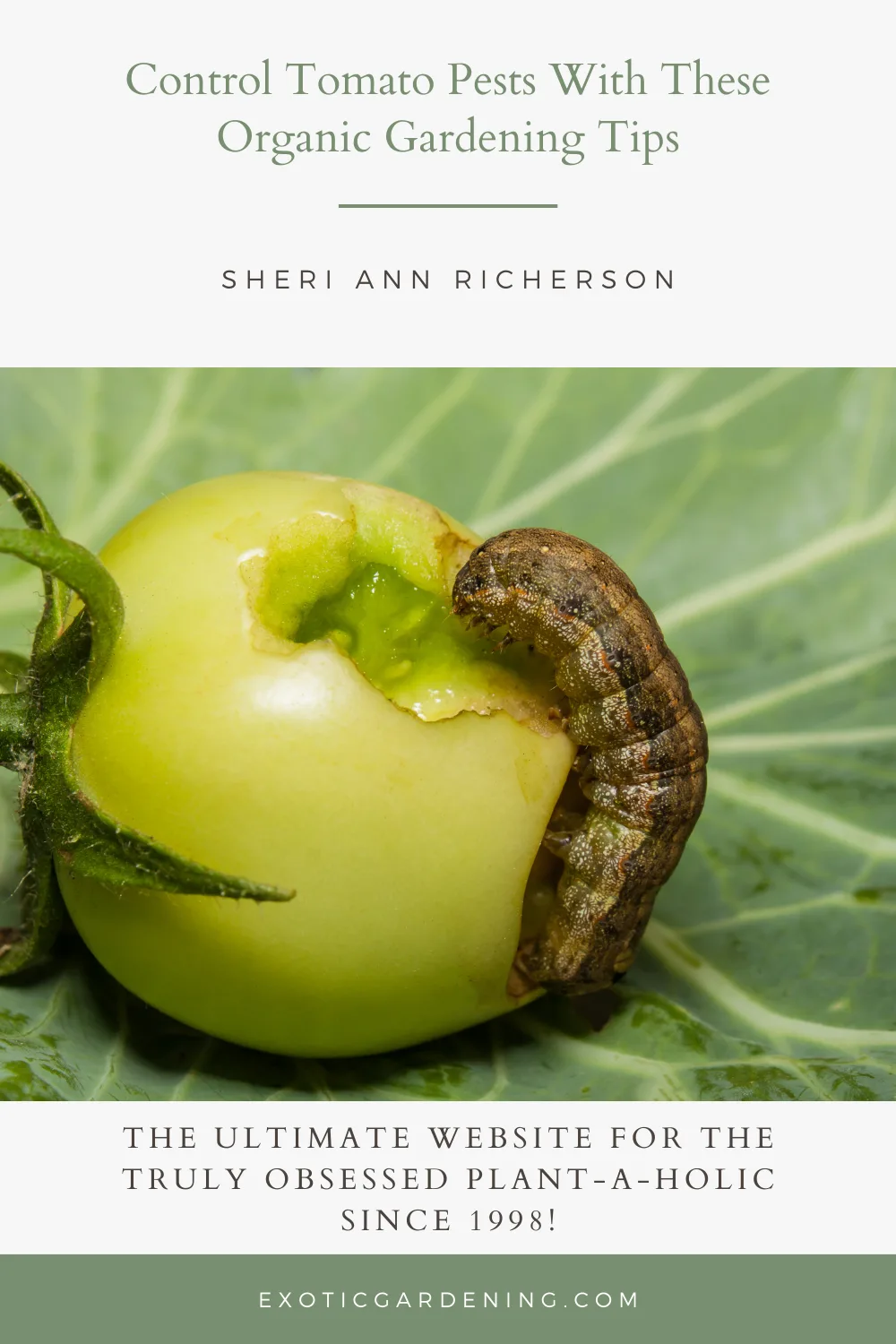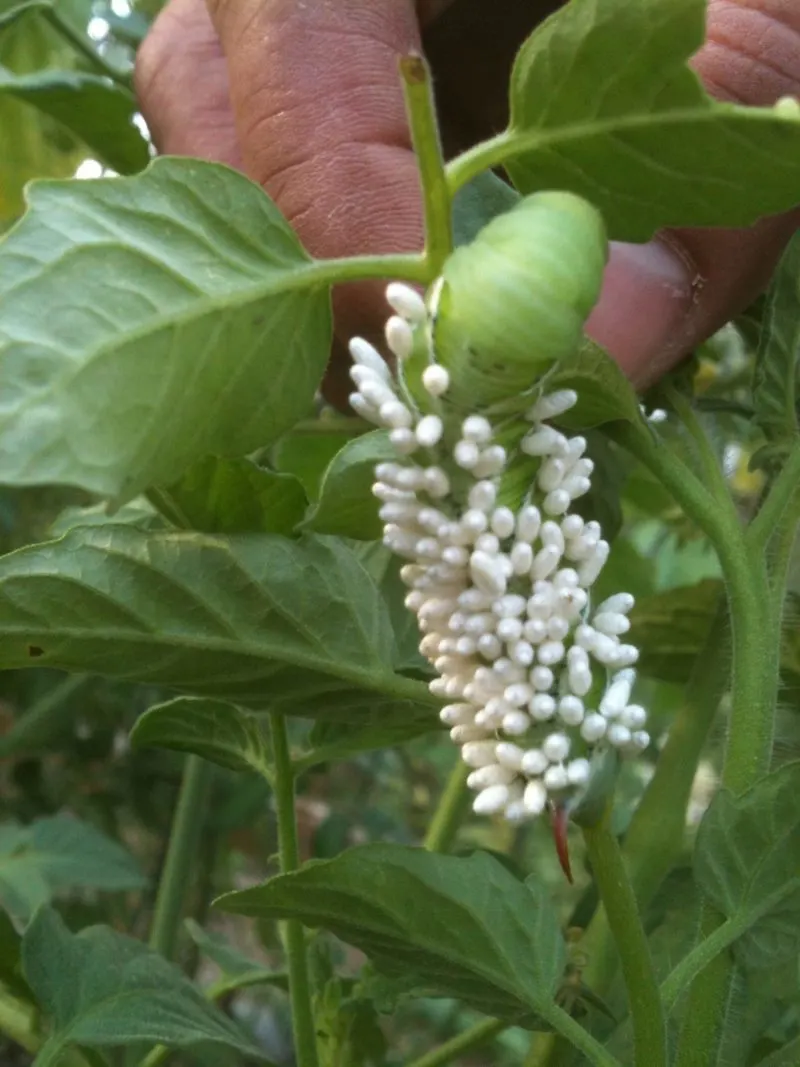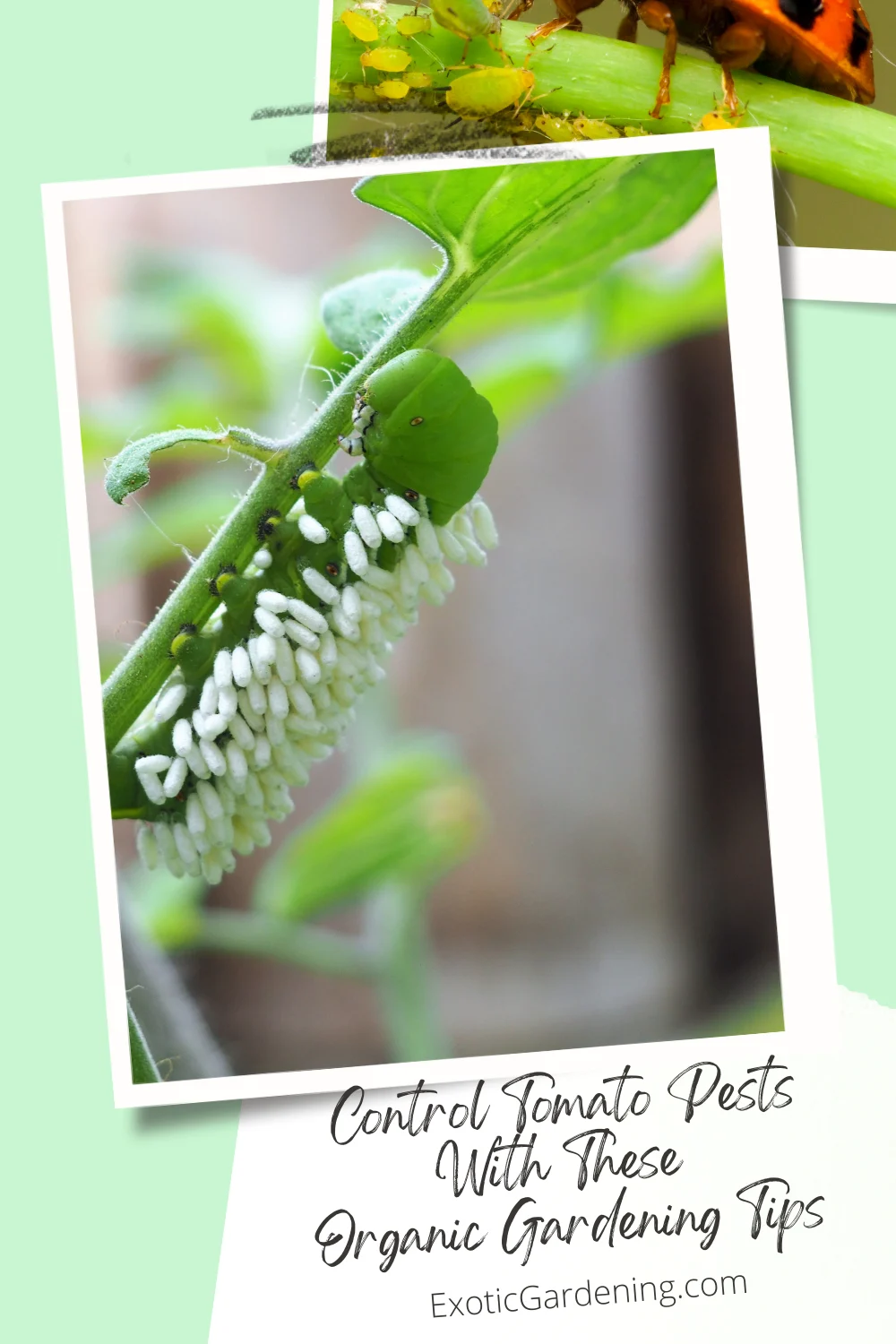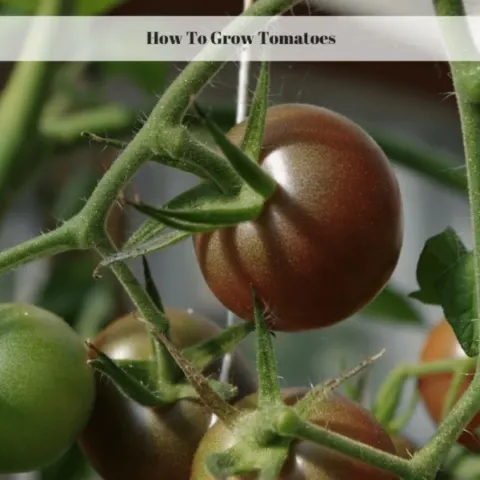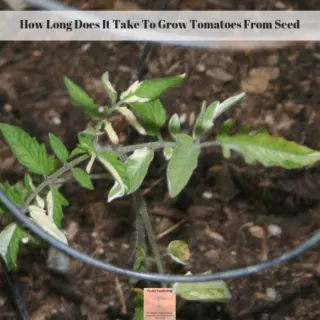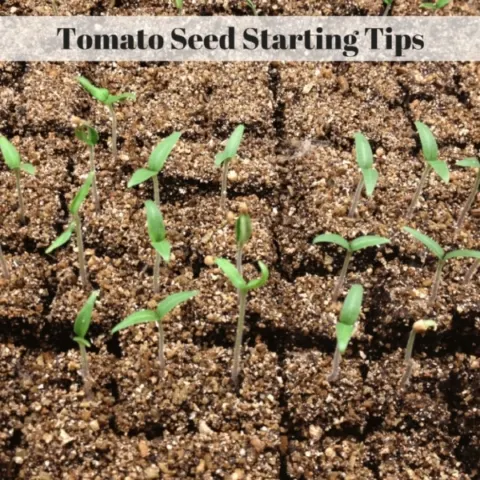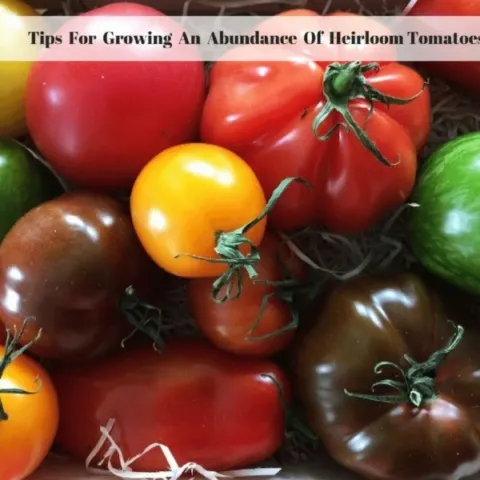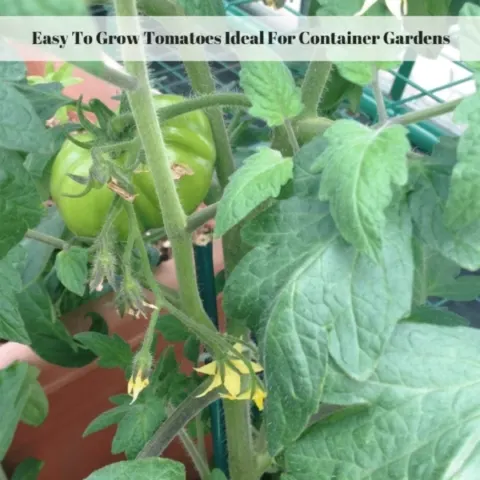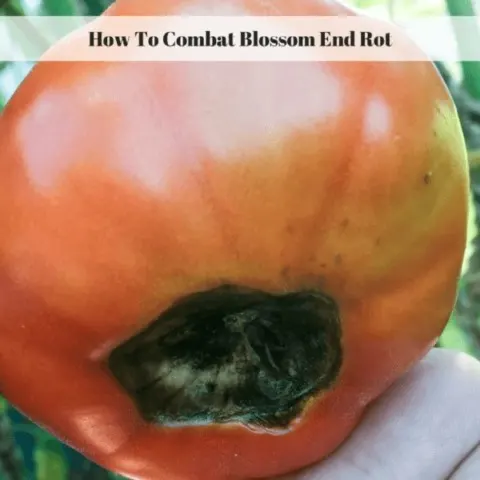These organic gardening tips make it easy to control common garden pests that you are sure to encounter as a tomato gardener.
Common Tomato Pests
Creepy critters like cutworms, flea beetles, grasshoppers, spider mites, and root weevils are all too eager to feast on your beautiful, healthy tomato plants.
However, four of the most common tomato pests you want to guard against are aphids, stink bugs, tomato fruitworms and the tomato hornworm.
The damage these pests cause varies, so it pays to know exactly what to look for so you know what method of action to take before too much damage is done.
So, let’s look at each one and discuss some organic solutions to get rid of them.
Aphids
These tiny green or black insects can either be winged or wingless and like to hang out in clusters on the bottom side of tomato leaves or tomato stems.
They suck moisture and nutrients out of your tomatoes, causing curled and yellowed leaves and stunted plants.
Stink Bugs
True to their name, stink bugs let off a very foul odor if threatened or squashed.
Both nymphs and adults damage your tomatoes by sucking their sap and attacking the fruit.
Regardless of their age, stink bugs look exactly the same with an easily recognized shield-shaped body.
Adults can be black, brown or green, and either with or without markings.
Youths are basically just smaller versions of the adult stink bug.
When they attack your tomatoes, your plants are weakened and young fruit may form improperly as a result.
Yellow-white spots beneath the skin of ripened fruit are a common sign of stink bug damage to your crops.
Tomato Fruitworms
Also known as the corn earworm, these pink, green or brown insects with light striping grow to nearly 2 inches long.
They are actually moth larvae that bore into tomato fruit to feed.
The moths lay their eggs close to tomato stems with green fruit, and approximately a week later, you have a tomato fruit worm problem.
Tomato Hornworms
Tomato hornworms strip the leaves from tomato plants and also feed on green tomatoes.
They feed on the surface instead of boring into the developing tomato, so the fruit looks like ir has large open scars – or bitemarks – on it.
The moths lay their eggs on the underside of the tomato leaves at dusk with each moth laying one to five eggs per visit.
In the summer, the hornworms emerge from their eggs in about four days.
Then they feed for three weeks before a new generation of moths emerge.
Organic Garden Pest Control Solutions
Once you see any of these common and frustrating tomato pests on your plants, you want to take immediate action.
For starters, spray the affected areas with a strong stream of water to dislodge these insects.
If you spray water on the plants early in the morning for several days consecutively, you are sure to eliminate multiple generations of these quickly multiplying pests.
Once you have done that, you will want to employ the following organic pest control methods:
- Hand picking works well for insects such as the tomato hornworm, tomato fruitworm and stinkbugs. Fill a large can with a lid with hot, soapy water. Then take the time to put on a pair of gardening gloves before you try to pick any of them up. Remove the lid from the can of hot soapy water and drop the pests into it, then quickly put the lid back on. When you are done, is best to leave the can sit outdoors overnight in a safe area to make sure the pests drown.
- Weeding keeps the areas around your plants free from weeds and other garden debris because this eliminates a favorite habitat and hiding place for many garden pests.
- Introduce beneficial insects such as ladybugs, praying mantis, and lacewings (all available for order online) to your garden and let them do what they do best. Alternatively plant a beneficial insect seed mix to attract them into your garden and keep them there.
- Mix organic insecticidal soap with water according to package directions – or buy a pre-mixed solution and apply it directly to the tomato pests for best results.
- Neem oil is an organic, plant-based oil that is very effective against aphids, stink bugs and tomato fruit worms. You can find it in many garden centers or order it online. Apply according to package directions for best results.
Oee thing that you do need to know if you choose to use any type of spray in your garden – even if it is organic – is that the same pesticides that kill insects also kill the beneficial bugs, so I highly encourage you to only do that as a last resort.
Garden pests are often an inevitable fact of life for tomato gardeners, however in addition to the tips above making sure your soil is healthy is a great way to prevent insect infestation in the first place.
However, with a little education and the right resources, you can to protect your hard work so you can relax and enjoy the fruits of your labors.
Growing Tomatoes
How To Grow Tomatoes
Learn how to grow tomatoes and how to plant tomatoes in a garden. Growing great tomatoes is easy if you follow a few simple steps.
How Long Does It Take To Grow Tomatoes From Seed
Learn the real answer to how long does it take to grow tomatoes from seed. Plus learn what factors can affect the germination process.
Tomato Seed Starting Tips
These tomato seed starting tips are sure to have you successfully raising tomatoes from seed. Growing from seed lets you to grow unique, heirloom varieties.
Heirloom Tomatoes – Varieties For Every Palate, But Where Do You Start?
Do you want to grow non gmo tomatoes in your garden? Choose your color and taste preference then grow your own organic heirloom tomato plants.
Tips For Growing An Abundance Of Heirloom Tomatoes
Non gmo tomatoes started from seed at home are the choice for many gardeners. Learn tips for growing great tomatoes in your own garden.
Grow More Tomatoes With These 8 Organic Gardening Tips
Learn how to grow organic tomatoes with these 8 tips. Then grow more tomatoes that are healthy and delicious right in your own backyard!
Easy To Grow Tomatoes Ideal For Container Gardens
Ever wonder how to grow tomatoes in pots outside? Start with these easy to grow tomatoes that perform well when grown in containers indoors or out!
The Bottom Line On The 3 Tomato Sampler Challenge
The tomato sampler challenge shares my thoughts on how three tomatoes taste and how fast they ripen, plus my thoughts on a fourth one.


